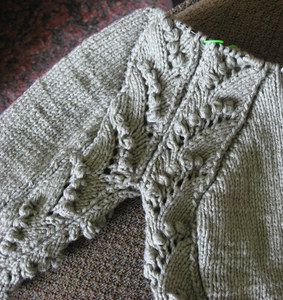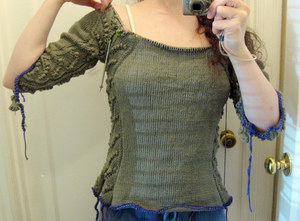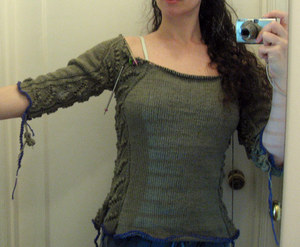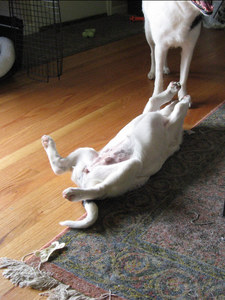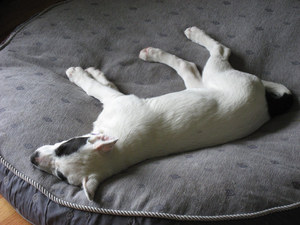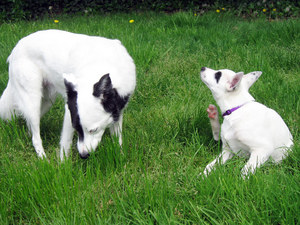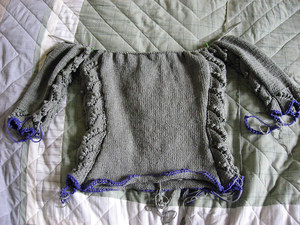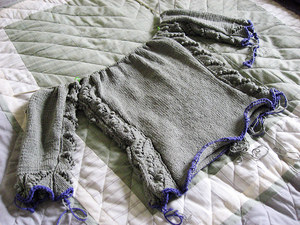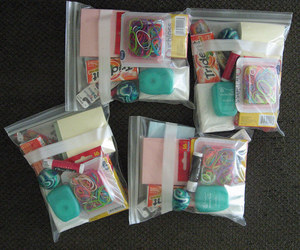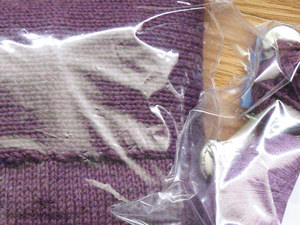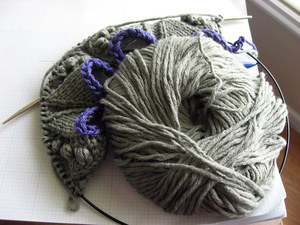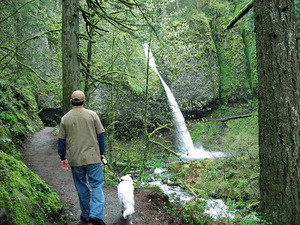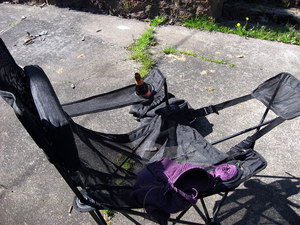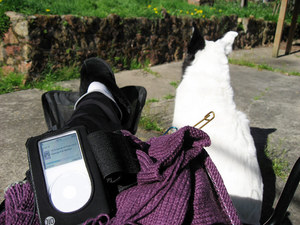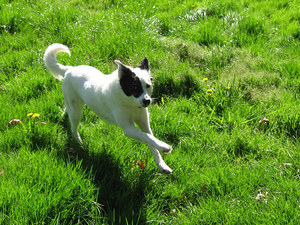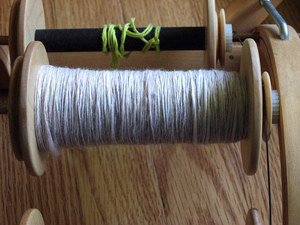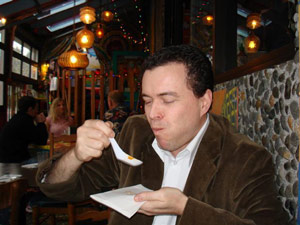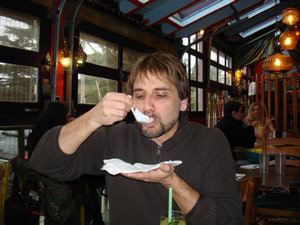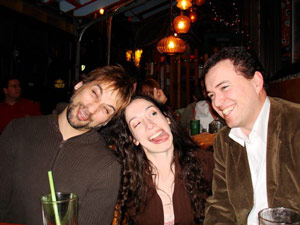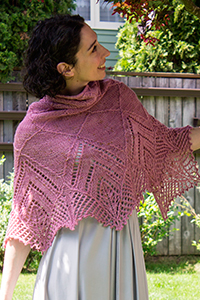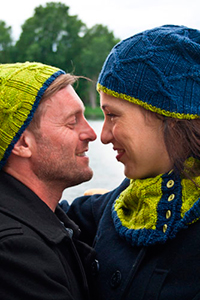What can I say, I'm a weak weak woman. With all the gorgeous luxury fibers I've been getting, and my poor results with them on both a drop spindle and the wheel, I thought it was time that I give into the siren call of the supported spindle.
I ordered myself a Spindolyn which I had first seen in action while shooting this episode of Knitty Gritty with the magnificent Shannon Okey. Of course, as soon as it came in, I wanted to play with it, but decided to be a good doobie and at least wait until my work day was over. The days are long enough that I had just enough time to snap some progress pics before the sun was completely gone for the day. Here is
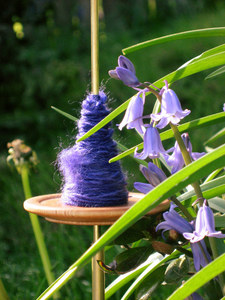
Spindolyn nestled in a clump of flowers in my back yard
It's probably not a fair to make an assessment of the Spindolyn at this point since I've used for all of, maybe, 2 hours, but this in the internet and lack of authority on a subject has never stopped anyone from waxing unintelligibly before. What's to stop me now? Of course, when I have a new opinion in a few months, all of this will be moot, but here's a virgin's assessment of the Spindolyn.
Why I chose the Spindolyn
Firstly, for the price, it definitely seemed worth the risk. At $26, the Spindolyn is cheaper than many spindles of a similar size or smaller.
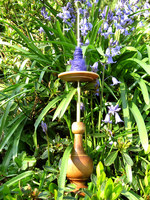
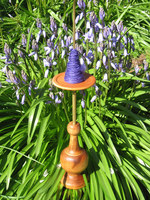
A couple full frontal shots.
There are several types of supported spindle on the market including the Navajo and Tahkli. Since both have long histories, I'm guessing they are excellent tools and well tested. However, the Navajo seemed a bit large and unwieldy and definitely lacked the sort of portability I'd hope for and the Tahkli seemed so small that you would only be able to work super fine lace weight in order to get any sort of yardage on the spindle. The Spindolyn seemed like a nice middle ground and a tool that would be easier to learn on since you could use both hands to draft.
Taking her for a spin
The movie on the Spindolyn homepage seemed fairly straight forward so I got right to spinning. At first, it seemed nearly impossible to get the spindle to spin for any length of time and since all the cuts in the demo movie were relatively short, I started to wonder if this is just the nature of the beast. With a bit more time, I was able to get a longer spin. Excessive predrafting helps a lot. After I got the hang of it, it seemed to go fairly well. I'm not dancing on the tree tops with delight at my progress, but do feel I'm getting the hang of it.
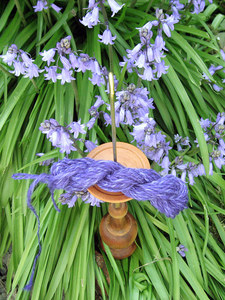
And my first little skein
Comparison to a drop spindle
In general, I don't feel I got as long or as effective a spin as I get on a drop spindle. This isn't necessarily a problem since you don't have that same risk of the fiber breaking from lack of twist, but it's definitely something I noticed. I love spindles and the processes, but not so much that I want it to take any longer than it has to. I'm about efficiency.
The shaft onto which you store your fresh spun is short compared to my drop spindles so if feels like I have to make a significantly smaller cop than I normally do. I was usually able to get close to 50 yards of 2 ply out of a single cop. With the Spindolyn, I think I'll have to settle for less.
In this same vein, being limited to the spinning the distance from my knees to as far as my arms can reach overhead, before having to wind the yarn on, also feels limited. I played with placing the Spindolyn between my feet which was awkward when just spinning close to the floor but does seem to give me more spinning time before winding on, which I like. I don't think this is a negative of the Spindolyn, more an issue with supported spindles in general.
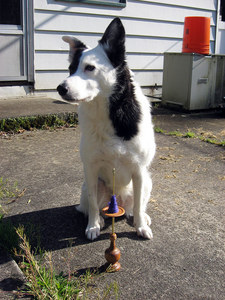
Obviously, you knew there'd be a Panda shot too.
Benefits of the Spindolyn
I do love that the Spindolyn works as its own lazy kate, though. This is much nicer than my old shoe box lazy kate, I use with my beautiful Goldings. This is not a deal maker but it's pretty darn nice.
Additionally, as I mentioned before, there's little risk of breaking your yarn for lack of twist, though, I'm skilled (ha!) enough to manage this nonetheless. Later in the evening I tried a bit of angora and found it far easier than my previous experiences on a drop spindle. For the purposes of short silky fibers, this really does seem to be a great option.
The Spindolyn also seems to be well made, durable and a good value. For the price, I think you really do get a lot.
Conclusion
Obviously, it's too early to make any final conclusions but based on my first impression, I think this is a good purchase and one I'll have plenty of use for. I still love the drop spindle and find it more relaxing and more efficient. I don't like to have to wind on the fiber every few seconds. I find myself spending a lot more time with my arms craned uncomfortably over my head in an attempt to extend the time drafting and spinning than I do with the drop spindles. However, as I said, I do not see this as a shortcoming of the spindle but as a byproduct of supported spindles in general and my own impatience.
I would love to see these, at some point, come in a model with more wood at the edge of the spindle, to facilitate longer spin time, and perhaps a longer shaft as well, to allow for a larger cop. I don't know if this would adversely effect the performance, but it seems like both would allow for more efficient spinning.

